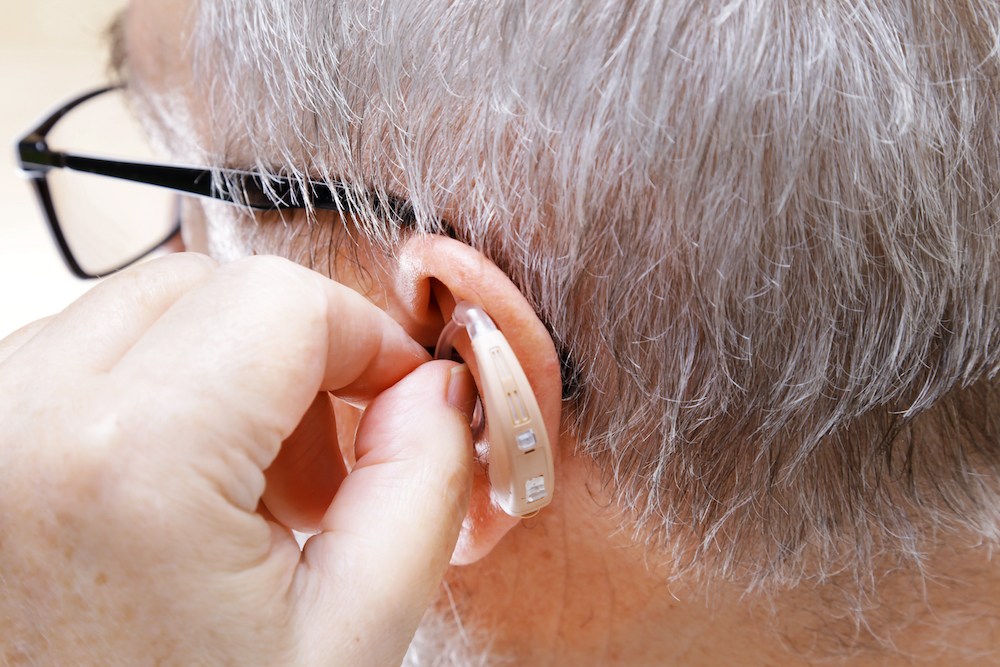How to Choose the Best Hearing Aid for Your Lifestyle
Choosing the right hearing aid isn’t just about finding something

By: admin | July 29, 2025
Hearing aids have quietly become some of the most advanced pieces of personal technology you can own. What started as basic sound amplifiers have evolved into sophisticated computers that can stream phone calls, adjust automatically to different environments and even translate languages in real time. The technology inside these tiny devices has advanced faster than most people realize, making them more like wearable tech than traditional medical devices. What used to require multiple visits to an audiologist for adjustments can now happen automatically as the device learns your preferences.
The push for even more advanced features shows no signs of slowing down. Hearing aid manufacturers are constantly working on ways to make hearing aids more intuitive, more responsive and more integrated with the technology we already use daily. The goal is to create devices that don’t just help you hear better, but actually anticipate what you need in different situations. This growing market reflects something important: people expect their hearing aids to do more than just make sounds louder. They want devices that truly improve their quality of life and keep up with an increasingly connected world.
Hearing aids have come a long way from their earliest days, when people relied on cupped hands or simple ear trumpets to amplify sound. These basic devices appeared as early as the 17th century and worked purely by funneling sound waves into the ear. They offered no real customization or amplification beyond what their shape allowed, but they represented the first step toward helping people hear more clearly in everyday life.
By the early 20th century, technology began to change the picture. Carbon hearing aids and vacuum tube models offered greater amplification, but they were large and often awkward to use. The real shift came with the invention of the transistor in the 1950s, which made hearing aids much smaller and more portable. This era brought behind-the-ear devices that could deliver better sound quality and more power while staying relatively discreet compared to the bulky body-worn versions that preceded them.
In recent decades, digital technology has transformed hearing aids even further. Modern devices can be programmed for an individual’s hearing needs, reduce background noise and connect wirelessly to phones and other audio sources. Rechargeable batteries, water-resistant designs and nearly invisible in-the-ear models offer even more convenience and flexibility. What began as simple sound funnels has evolved into sophisticated tools that help people hear more naturally and confidently in almost any environment.
As awareness of hearing health grows, more people are making informed choices that support both hearing and overall well-being. Understanding the benefits of early testing and timely use of hearing aids can lead to better outcomes. Hearing is not just about sound; it influences how we interact with the world, stay safe and participate fully in conversations and activities we enjoy. When you prioritize regular checkups and stay informed about your hearing, you are investing in your overall quality of life.
Recognizing early signs of hearing loss and knowing your options makes it easier to take action. Subtle changes, like asking people to repeat themselves more often or struggling in noisy places, can be early indicators that deserve attention. When these signs are caught early, there is more opportunity to find solutions that fit your needs and lifestyle. Hearing aids today offer advanced features and personalized settings that can make adapting to them smooth and effective, helping you hear clearly in a variety of settings.
Addressing changes in hearing promptly helps maintain strong connections with family, friends and daily activities. Communication is essential for relationships and staying engaged in the things you love, from social events to hobbies. Early support also helps prevent the potential isolation that sometimes comes with untreated hearing loss, ensuring you continue to participate confidently and comfortably in daily life.
Smart hearing aids offer several key technological features that make them more convenient than older models. Wireless connectivity allows you to stream calls, music or TV audio directly into your hearing aids. Many devices also include automatic sound adjustments, changing settings based on your surroundings without any extra effort from you.
Some models come with health tracking abilities through connected apps, providing information about your daily activity or steps. These features support both better hearing and overall well-being.
One of the most significant improvements in smart hearing aids is wireless connectivity. Many current models use Bluetooth technology, allowing you to stream phone calls, music and GPS directions directly to your hearing aids. Around 70% of new hearing aids now include some form of wireless connection.
These smart features also enable your devices to adjust automatically to your environment. If you move from a quiet living room to a busy restaurant, your hearing aids can change their settings on their own, keeping conversations clear and reducing background noise. This automatic adjustment supports better communication in various settings.
Some models even track your steps or monitor basic health stats through connected apps. This added support means your hearing aids can contribute to your overall well-being, not just your hearing.
Automatic sound adjustments in smart hearing aids let you move through your day without needing to change settings manually. These advanced devices sense whether you are in a quiet room, on a busy street or in a crowded restaurant and adjust the volume and clarity automatically. Voices remain clear and background noise is managed so you can focus on what matters. This means less fiddling with controls and more time enjoying the moment, whether you are meeting friends for coffee, shopping or relaxing at home.
This technology makes conversations easier to follow wherever you are and allows you to feel more at ease knowing your hearing aids will adapt to your environment. Instead of worrying about missing important details or feeling left out in noisy settings, you can trust your hearing aids to do the work for you. The shift between different listening environments becomes smooth and effortless, helping you stay present and engaged without distraction.
For many people, these features reduce the stress and self-consciousness that can come with using older or less advanced devices. Automatic adjustments mean you do not have to announce to the world that you are changing settings just to hear better in a new situation. Instead, you can move confidently through your day, knowing your hearing support is smart enough to keep up with you. This level of convenience helps make hearing aids a natural part of daily life, supporting clear communication and comfort wherever you go.
Some smart hearing aids now include health tracking features that provide information about your daily activity. These devices may count steps or monitor movement through an app connected to your phone. Instead of needing a separate fitness tracker, you can use your hearing aids to get valuable insights about how much you move each day. For many users, this integration makes it easier to stay mindful of personal health goals without adding extra gadgets to manage.
Recent reports show that nearly one in five new hearing aids offer some form of health or fitness tracking. This shift reflects a growing understanding that hearing health is connected to overall well-being. The information collected can be reviewed over time to see trends, spot changes or even share with healthcare providers when needed.
This technology helps you keep track of your activity levels and can encourage healthy habits. Seeing daily step counts or movement goals can motivate you to take an extra walk or spend more time being active. For sedentary adults, it can also serve as a gentle reminder to avoid too much sitting and support better balance and mobility. Health-tracking hearing aids are designed to support not just your ability to hear clearly but your ability to stay active, engaged and independent in daily life.
Artificial intelligence (AI) helps smart hearing aids adjust to your preferences. These devices can learn how you like to hear in different situations and automatically change sound settings, reducing the need for manual adjustments.
Studies show that about 40 percent of new hearing aids use AI to improve sound quality and manage background noise. AI-powered devices can recognize different environments and switch modes quickly, giving you a smoother listening experience throughout the day.
Recent improvements have led to smaller, lighter smart hearing aids that are comfortable for extended wear. Many models use soft materials and flexible shapes to fit a variety of ear sizes.
These advances mean you can wear your hearing aids longer without discomfort. Comfortable designs help you feel good about wearing your devices every day, supporting better hearing and an active lifestyle.
Smart hearing aids are not only advancing in performance but also evolving to be more environmentally responsible. As these devices become more sophisticated, manufacturers are designing them with both user convenience and sustainability in mind. The shift toward rechargeable models has been especially important in the smart hearing aid category. These devices often include advanced features like wireless connectivity, health tracking and automatic sound adjustments, all of which require more power. Rechargeable batteries help support these demands while also reducing the environmental impact of disposable battery use.
Sustainability is also being considered in how smart hearing aids are built. Some manufacturers are using recycled plastics or bio-based materials in the outer casings, which helps cut back on the use of new raw materials. These design choices do not compromise durability or performance but contribute to a more eco-conscious product. Since smart hearing aids are worn daily and often replaced every few years, using sustainable materials can make a meaningful difference over time.
Packaging is another area where changes are happening. Smart hearing aids are now more likely to come in recyclable or low-waste materials. Companies are choosing recycled cardboard, molded paper trays and other environmentally responsible options instead of foam or plastic-heavy packaging. This matters because hearing aids are typically shipped with accessories like chargers or cleaning tools, which can add to packaging waste if not carefully designed
Hearing aids have entered a new phase where function and flexibility come together in ways that were hard to imagine just a few years ago. These devices are no longer limited to simply making things louder. They learn how we live, adjust to our daily routines, and help us stay in step with both quiet moments and busy environments. For many of us, that means hearing aids feel less like clinical tools and more like everyday technology that makes life easier. As these features continue to grow, the focus stays on giving you more control and a more natural hearing experience.
If you are ready to explore what this kind of technology could mean for you, we are here to help. Contact Baker Audiology and Hearing Aids in Sioux Falls, SD at (605) 610-3466 to learn more about how smart hearing aids can support you in the conversations and environments that matter most.
Tags: benefits of hearing aids, hearing aid repair, hearing aid styles

Choosing the right hearing aid isn’t just about finding something
By: admin | October 20, 2025

Hearing aids have quietly become some of the most advanced pieces of
By: admin | July 29, 2025

If you enjoy hiking, playing tennis, working in your garden or
By: admin | June 20, 2025
